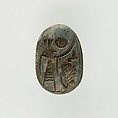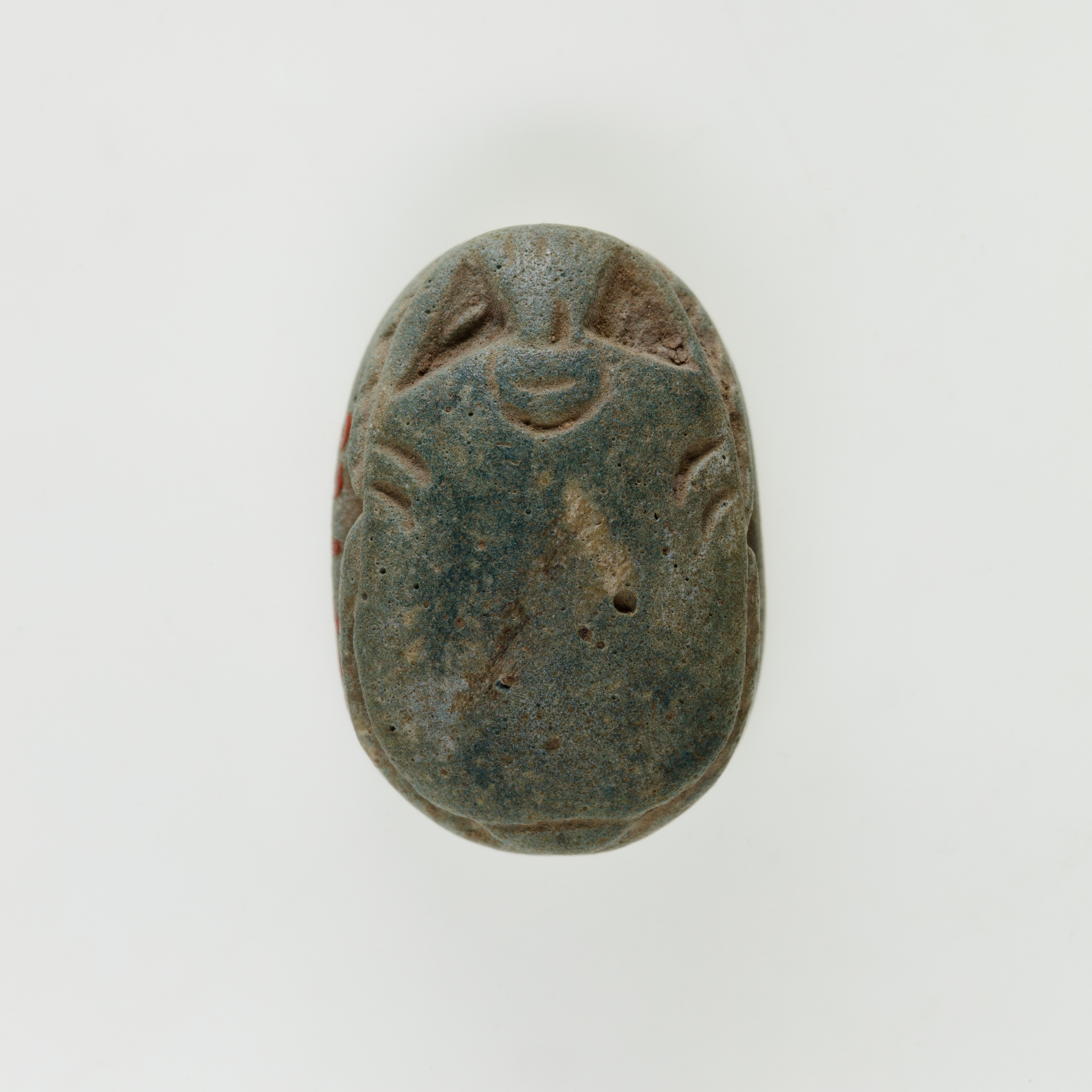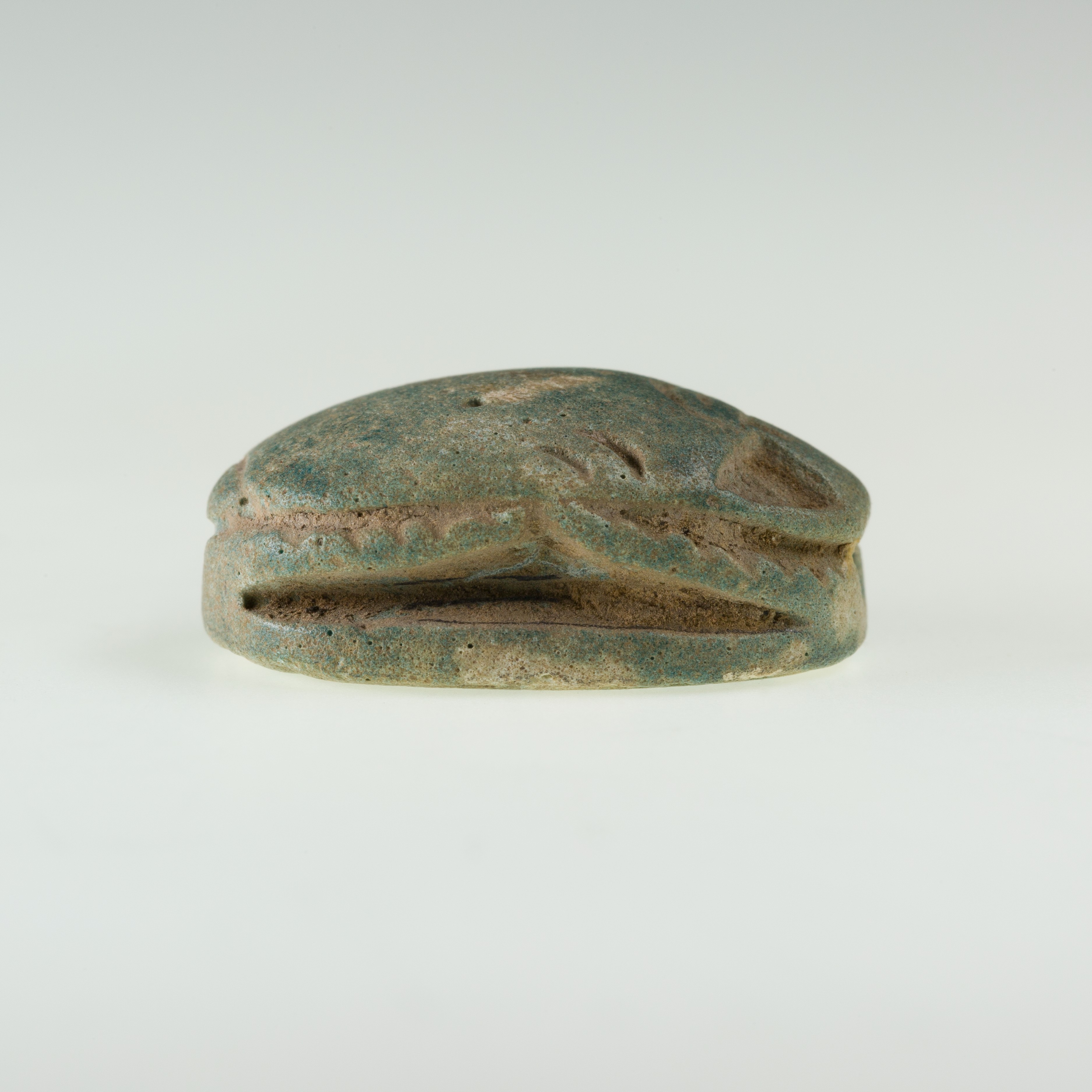Scarab with a Representation of Seth-Baal and Uraeus
New Kingdom
The ancient Egyptians adored the dung beetle as a symbol of the daily passage of the sun, as it pushed the dung ball forward it mirrored the sun disk moving across the sky. From the First Intermediate Period to the Late Period, the scarab was a popular shape for small amulets and stamp seals as a symbol for creation and resurrection. Already in the early 2nd millennium B.C., Egyptian scarab seals spread to the Levant and Crete and soon local imitations began to appear.
On the underside of this scarab, an aroused cobra (uraeus) is placed in front of a figure of the god Seth-Baal, identified by his outstretched wing, long ears and snout. Above him is a sun disk. Such representations were very popular on stamp seals during the late New Kingdom, when Seth became a kind of patron deity of the kings of the Ramesside dynasties (Dynasty 19–20, ca. 1295–1070 B.C.). Seth was closely identified with the Near Eastern god Baal, becoming a ‘hybrid’ deity, the winged Seth-Baal.
This image cannot be enlarged, viewed at full screen, or downloaded.
This artwork is meant to be viewed from right to left. Scroll left to view more.





